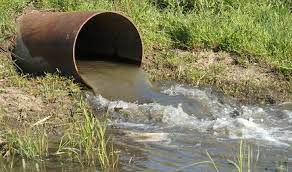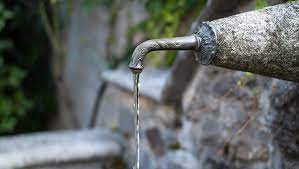Overseas Situation Report Wednesday 26th May 2021
By Mike Evans
“Think like a proton. Always positive.” – Unknown
With almost 168 million recorded cases of Covid-19 across the world and with nearly three and a half millions of lives lost, scientists are doing all they can to understand the virus better and hopefully allow technology to combat it and put an end to the Pandemic.
 From the subarctic community of Yellowknife, Canada, to the subtropical city of Brisbane, Australia, scientists in more than 50 nations are now monitoring the spread of SARS-CoV-2 in sewage. The number of sewage-surveillance programmes tracking Covid-19 has exploded during the past year from a dozen or so research projects to more than 200, following the discovery that whole virus particles and viral fragments are shed in faeces.
From the subarctic community of Yellowknife, Canada, to the subtropical city of Brisbane, Australia, scientists in more than 50 nations are now monitoring the spread of SARS-CoV-2 in sewage. The number of sewage-surveillance programmes tracking Covid-19 has exploded during the past year from a dozen or so research projects to more than 200, following the discovery that whole virus particles and viral fragments are shed in faeces.
The information garnered is helping scientists to track down cases, predict surges, identify where to target testing and estimate overall numbers of infected people in cities or regions. Although sewage surveillance has been used for several decades to identify polio outbreaks and target immunization programmes and, more recently, to detect illicit drug use, the pandemic has brought new focus and investment in it as a means of tracking public health.
“There was always an interest in wastewater epidemiology, but now it’s taken flight,” says Ana Maria de Roda Husman, an infectious-diseases researcher at the Netherlands National Institute for Public Health and the Environment in Bilthoven.
Since early 2020, SARS-CoV-2 sewage projects have taken off around the world as wastewater experts pivoted to concentrate on the crisis. But the scale and focus of surveillance programmes varies, depending on how severely countries or communities have been hit by the pandemic.
 The number of ways sewage surveillance is being used is dizzying. In the United Arab Emirates, researchers have been testing sewage from commercial aircraft to see whether incoming flights were carrying infected passengers. Scientists in Hong Kong are monitoring sewage in apartment buildings to find undetected infections, and, in Yellowknife, health officials are testing wastewater to discover which viral variants have made it to their city, just 400 kilometres from the Arctic Circle.
The number of ways sewage surveillance is being used is dizzying. In the United Arab Emirates, researchers have been testing sewage from commercial aircraft to see whether incoming flights were carrying infected passengers. Scientists in Hong Kong are monitoring sewage in apartment buildings to find undetected infections, and, in Yellowknife, health officials are testing wastewater to discover which viral variants have made it to their city, just 400 kilometres from the Arctic Circle.
One common application of such surveillance programmes is as an early-warning system. People who are infected start shedding virus fragments a few days before they show symptoms, and de Roda Husman uses this to predict hospitalization numbers a few days ahead of time.
Other groups are using wastewater to find and suppress outbreaks on a much smaller scale. At the University of California, San Diego, scientists test wastewater from 343 buildings around campus to check for signs of infection. Whenever a sample comes back positive, the University sends targeted messages to encourage students housed in affected buildings to get tested and isolate. “You just can’t afford to test 10,000 students each day,” says Smruthi Karthikeyan, an environmental engineer at the University. Wastewater tracking provides a cheap and effective alternative, catching up to 85% of cases on campus.
 A similar system is in use in Hong Kong, where signs of SARS-CoV-2 in the wastewater of two apartment buildings led to mandatory testing of all residents in January. According to the South China Morning Post, the early-warning system helped health officials to find nine asymptomatic cases.
A similar system is in use in Hong Kong, where signs of SARS-CoV-2 in the wastewater of two apartment buildings led to mandatory testing of all residents in January. According to the South China Morning Post, the early-warning system helped health officials to find nine asymptomatic cases.
Scientists in Australia, where Covid-19 cases have remained relatively low throughout the pandemic, are also using wastewater tracking as an early-warning system. In Queensland, wastewater samples are collected across the state and sent to a laboratory in Brisbane for analysis.
Elsewhere, governments and institutions have adapted pre-existing wastewater-tracking methods to monitor larger trends in the numbers of cases across cities and neighbourhoods. One country leading the charge is the Netherlands.
Samples from wastewater-treatment plants allow researchers there to estimate how many people in large populations are infected with SARS-CoV-2, and government officials use these estimates to make decisions about whether to implement lockdowns and how to channel resources.
 Gertjan Medema, a microbiologist at the KWR Water Research Institute in Nieuwegein, the Netherlands, argues that wastewater gives a more accurate overall picture of infections than does diagnostic testing, because it includes asymptomatic individuals. “Not everyone is getting tested, but everyone is going to the bathroom,” he says. “It’s nice to have an objective tool that isn’t dependent on willingness to get tested.”
Gertjan Medema, a microbiologist at the KWR Water Research Institute in Nieuwegein, the Netherlands, argues that wastewater gives a more accurate overall picture of infections than does diagnostic testing, because it includes asymptomatic individuals. “Not everyone is getting tested, but everyone is going to the bathroom,” he says. “It’s nice to have an objective tool that isn’t dependent on willingness to get tested.”
Whilst this technology is good for those countries with a high income level, for the lesser well off countries the problem is the lack of a decent sewage system. In India, where they have just surpassed the 300,000 deaths from Covid-19 (and some believe this figure is well under the “real” number) many of the bigger towns and cities have suffered from poor sewage systems for many years. “Testing in India is incredibly challenging as sewage systems are fragmented,” says Sudipti Arora, an environmental scientist at the Dr. B. Lal Institute of Biotechnology in Jaipur, India. Only about one-third of all towns have sewer networks, she says. “Consequently, slums and rural areas remain largely untested.”
In two of the country’s northern states, her team is testing hospital wastewater for SARS-CoV-2, as part of a study into whether specific disinfectants inactivate the virus; as well as samples from wastewater-treatment plants, to determine if the method can be used more widely in India. Despite the challenges facing the method in India, Arora and her team plan to use the experience they have gained with sewage surveillance during the pandemic and apply it to detecting other infectious diseases, as well as antibiotic-resistant bacteria, in wastewater in the future.
 Many scientists working in the field say that a rare positive outcome of the pandemic might be that it will normalize the use of wastewater to monitor public health — whether for future pandemics or to track other health indicators, such as hormones that indicate stress or levels of caffeine consumption.
Many scientists working in the field say that a rare positive outcome of the pandemic might be that it will normalize the use of wastewater to monitor public health — whether for future pandemics or to track other health indicators, such as hormones that indicate stress or levels of caffeine consumption.
In the UK, testing and sequencing of sewage has been ramped up to help tackle Covid-19 outbreaks. The programme is currently providing insights to local health protection teams across England on the variants first identified in India and South Africa. Previous support has involved working with Bristol Local Authority to investigate the presence of the variant first identified in Brazil and launch surge testing to stop the spread. Testing sewage for Covid-19 and variants now covers more than two thirds of the population of England. The government-led programme to test sewage for traces of Covid-19 has ramped up genomic sequencing to help rapidly detect outbreaks of variants of concern.
The Environmental Monitoring for Health Protection (EMHP) Programme, led by the Joint Biosecurity Centre (JBC), a part of the newly-formed UK Health Security Agency (UKHSA), has reached a new milestone of testing wastewater for Covid-19 and variants across more than two thirds of the population in England. A new laboratory in Exeter opened last month dedicated to analysing wastewater, making it one of the biggest wastewater processing labs in the world.
Analysts from the JBC are using this insight to help build a better picture of where the virus is circulating, particularly asymptomatic Covid-19 infections that may otherwise go undetected.
Increased genomic sequencing of these sewage samples will provide more clues to where variants of concern may be circulating undetected in communities. It can pick up evidence of variants from infected people and continue to monitor sewage after surge testing has ended in an area. This helps provide reassurance the variant is no longer circulating in that community.
Wastewater samples are taken from around 500 locations in England and sent to the EMHP Laboratory at Exeter Science Park. Environment Agency scientists analyse the samples to quantify the amount of Covid-19 present. Some of these samples are then sent to other University labs, working with the Centre for Environment, Fisheries and Aquaculture Science (CEFAS), or to CEFAS laboratory partners who sequence the samples to identify variants.
The EMHP programme is a non-invasive way of providing insight for potential spikes in infection in an area. Testing takes place at sewage treatment works and the sewage network across England to understand infection levels at both national and local scales.
 Without the need to rely on individuals coming forward for swab tests, monitoring in a catchment area is able to pinpoint outbreaks to smaller areas and neighbourhoods. There are also pilots analysing the wastewater from specific institutions such as within the food supply chain and prisons. It is not possible to trace back the samples of Covid-19 to specific individuals and no personal information is collected.
Without the need to rely on individuals coming forward for swab tests, monitoring in a catchment area is able to pinpoint outbreaks to smaller areas and neighbourhoods. There are also pilots analysing the wastewater from specific institutions such as within the food supply chain and prisons. It is not possible to trace back the samples of Covid-19 to specific individuals and no personal information is collected.
Whatever tools are available to governments, we should all be thankful that science is working hard to find solutions to the virus and hopefully will help in the fight to eradicate it and will provide valuable data for use in the future to combat other pandemics.
Until the next time, Stay Safe.
Total Cases Worldwide – 168,279,838
Total Deaths Worldwide – 3,492,985
Total Recovered Worldwide – 149,736,078
Total Active Cases Worldwide – 15,050,775 (9.0% of the total cases)
Total Closed Cases Worldwide – 153,229,063
Information and resources:
https://www.worldometers.info/coronavirus/
https://www.nature.com/articles
